Berkeley, California, USA
February 4, 2025
A look back over an exciting decade for CRISPR and the IGI
On February 4, 2015, the IGI officially launched as the “Innovative Genomics Initiative,” a joint venture between CRISPR gene editing co-creator and not-yet Nobel Laureate Jennifer Doudna and Jonathan Weissman, then a professor at UC San Francisco. This first phase of the IGI was made possible by funding from the Li Ka Shing Foundation and was the beginning of what we all know today as the Innovative Genomics Institute.
Over the past decade, we’ve grown from a fledgling initiative focused around developing CRISPR tools and genomic medicines, to a full-blown research institute with 35 IGI Investigators and over 450 members, bringing together leaders in basic and translational research from across UC Berkeley, UCSF, UC Davis, and beyond. Our researchers are doing cutting-edge work in discovering and developing genome-editing tools; creating methods for delivering CRISPR to human cells and tissues, plants, and microbes; developing CRISPR-based therapies for unmet medical needs like rare genetic diseases; using CRISPR to adapt crop plants to climate change and increased food demand; and pioneering the use of genome-editing technology to fight climate change through biological carbon capture.
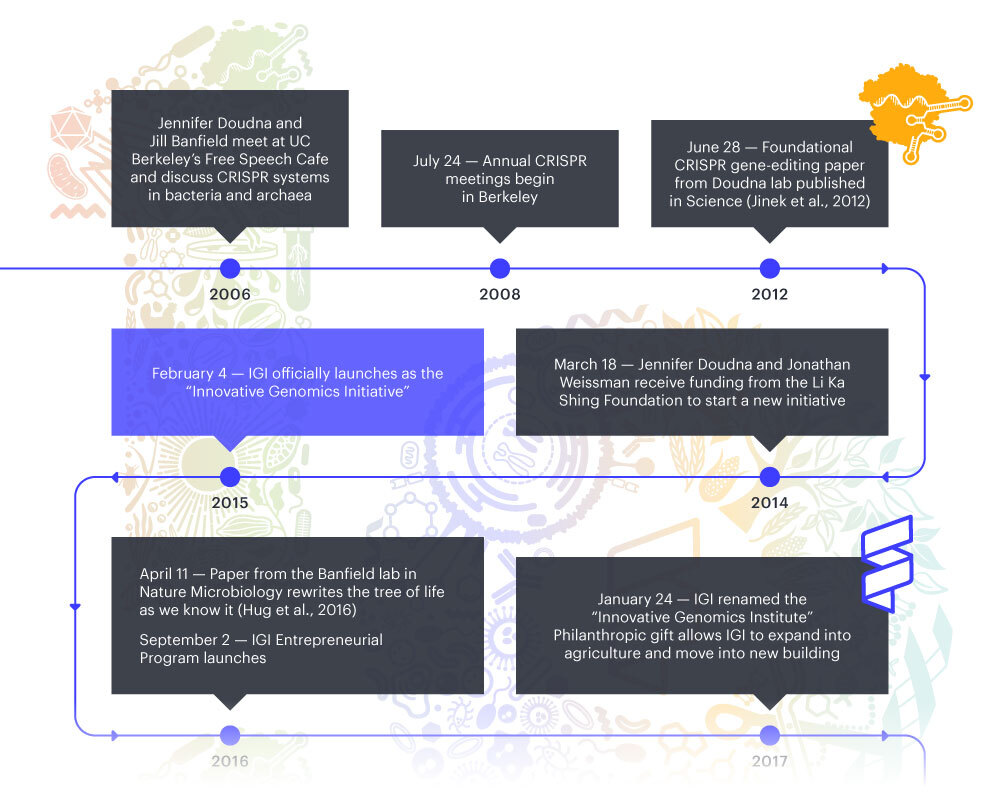
The Innovative Genomics timeline: key moments in the IGI history (and a little before). Click to expand.
To celebrate this 10-year milestone, we are reflecting back on the achievements of the past decade. Keep reading to learn about 10 key achievements from our first decade.
Discovering & engineering new genome editors
CRISPR-Cas9 is part of a bacterial immune system that Jennifer Doudna, Emmanuelle Charpentier, and their teams first engineered to use as a programmable genome editor. This enzyme has been the powerhouse of the CRISPR revolution over the past decade, but it’s not the only genome-editing game in town. Over the past 10 years, researchers at IGI have added additional enzymes to the gene-editing toolkit, including CasX and CasΦ. Each enzyme has its own unique properties, as do many others that have been discovered at labs around the world. IGI researchers are cataloguing the growing world of genome editors in our resource CasPEDIA, allowing researchers to use the one that best suits their needs.
 Jennifer Doudna and Emmanuelle Charpentier at a light installation celebrating Nobel Laureates in Sweden - © Nobel Prize Outreach. Photo: Clément Morin
Jennifer Doudna and Emmanuelle Charpentier at a light installation celebrating Nobel Laureates in Sweden - © Nobel Prize Outreach. Photo: Clément Morin
Delving into microbial genomes… and editing them
Microbes are everywhere in, on, and around you. IGI’s Director of Microbiology, Jill Banfield — who first introduced Jennifer Doudna to CRISPR over a coffee in 2006 — has pioneered ways to study and sequence the genomes of microbes using a technique known as genome-resolved metagenomics. Her team’s work has led to remarkable findings, including revolutionizing our understanding of the tree of life, finding tiny CRISPR systems in massive viruses, and discovering the mysterious “Borgs” associated with methane metabolizing microbes. With a record gift through the TED Audacious Project, Banfield, Doudna, and other IGI researchers are currently creating ways to edit the genomes of microbes within complex communities, or “microbiomes,” building new tools to reduce agricultural carbon emissions and improve human health.

Supporting early-stage entrepreneurs
The IGI is a translational institute, meaning we work to make sure that our discoveries in the lab can become solutions to real-world problems. Since 2017, IGI has hosted programs aimed at supporting early-stage researchers interested in making an impact through entrepreneurship. Researchers supported by our programs have gone on to run biotech companies that span healthcare to agriculture, collectively raising tens of millions of dollars to support their ventures and developing solutions to some of the most important problems facing society.
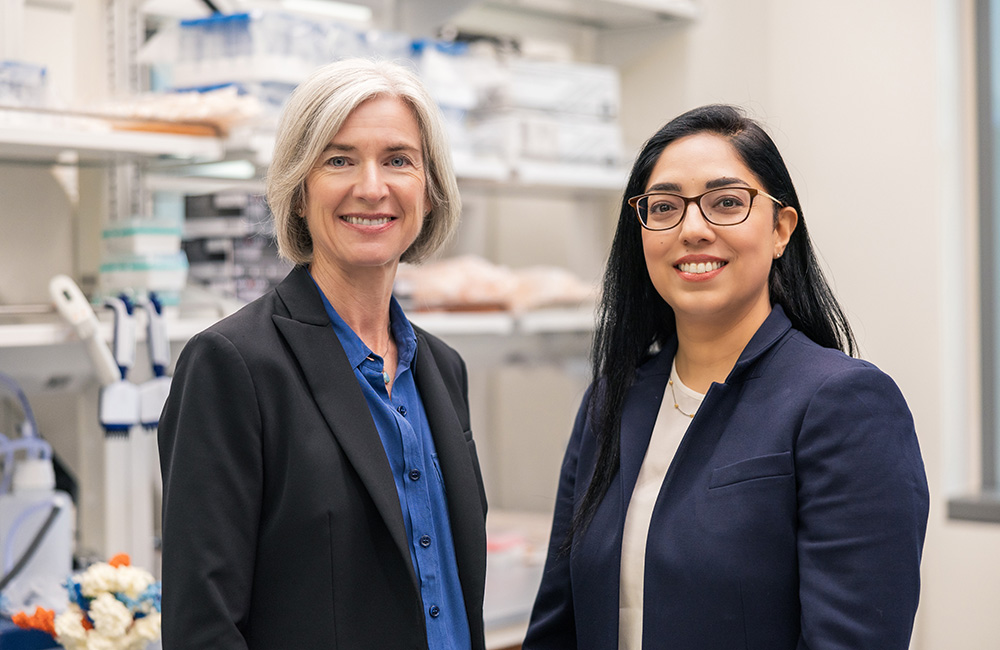 Jennifer Doudna and entrepreneurial fellow Navneet Matharu at the IGI
Jennifer Doudna and entrepreneurial fellow Navneet Matharu at the IGI
Using CRISPR to combat climate change
The IGI initially launched with the focus on combining basic and translational research for improving human health. In 2017, when the Innovative Genomics Initiative expanded thanks to a philanthropic gift and became the Innovative Genomics Institute, we broadened our research areas to include sustainable agriculture, and in 2020 added climate change in order to best realize our mission of using CRISPR to advance the public good. Our bold CRISPR for climate change vision is using genomic technology to empower a net-zero farm by reducing emissions, enhancing carbon capture, and helping farmers adapt to a changing climate.
Caring for our community with COVID testing
In the early months of 2020, the global threat of COVID-19 united the scientific community. The IGI created a pop-up coronavirus testing lab in our building on the UC Berkeley campus in the course of just three weeks. We tested patient samples from the UC Berkeley community, local first responders, and vulnerable people without insurance or permanent housing. We developed new protocols for COVID testing, launched mobile testing for California farmworkers, and developed new rapid test technology. When we halted our COVID testing operations at the end of 2020, IGI had processed over 650,000 tests, helping keep our California community safe.
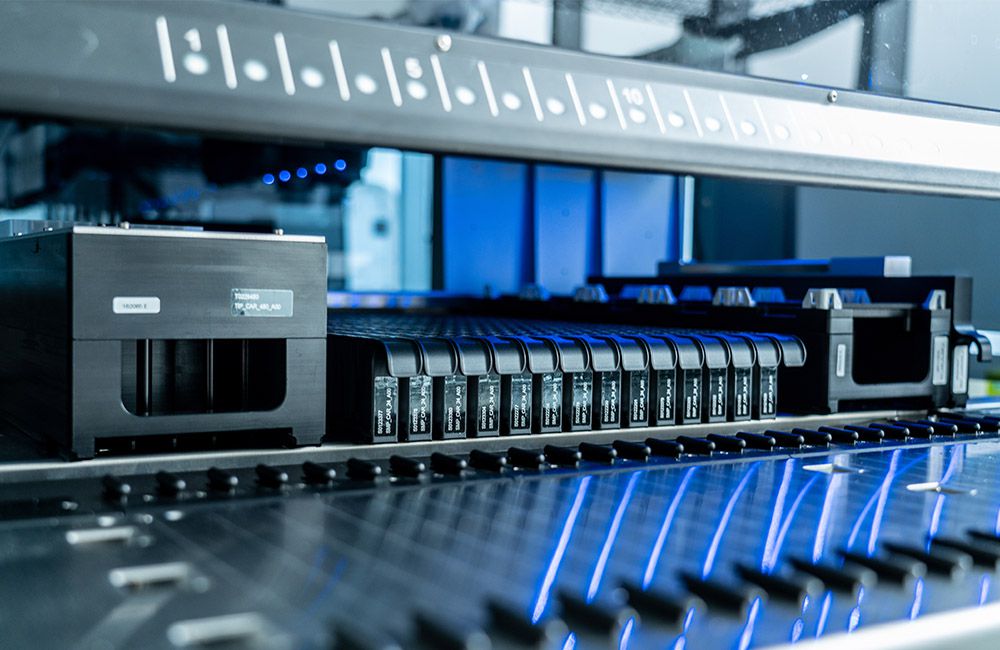 IGI’s robotic setup for high-throughput COVID-19 testing
IGI’s robotic setup for high-throughput COVID-19 testing
Honing CRISPR delivery
Getting CRISPR-based therapies to the right cells in the right tissues — what scientists call “delivery” — is perhaps the greatest challenge in developing new treatments for genetic and other diseases. IGI’s Delivery Consortium, led by IGI Investigator Ross Wilson, is tackling the challenge. The consortium is developing multiple ways to target genomic medicines to specific cell types, using both viral and non-viral delivery methods — as well as methods that borrow tricks learned from viruses to target and enter cells. Improving delivery technology is critical for ensuring access to affordable CRISPR-based therapies in the future.
Training scientists and regulators around the globe
One of the main criteria for IGI projects is public impact: the potential for our work to make a meaningful difference in peoples’ lives. But we are only one institute, so we can’t take on every possible project. To help scale our impact, we work with NGOs and regulatory agencies around the world to hold trainings and workshops on the science of CRISPR and the regulatory considerations. Through the first-of-its-kind AfPBA CRISPR Course In Gene Editing for African Plant Scientists we train scientists from across Africa to apply CRISPR to regional issues, and are working with scientists in India, Brazil, and regulators from across the globe through opportunities like our International Regulatory Capacity Building for Genome-edited Agriculture Workshop. We aim to make CRISPR tools available to all who could benefit from them.
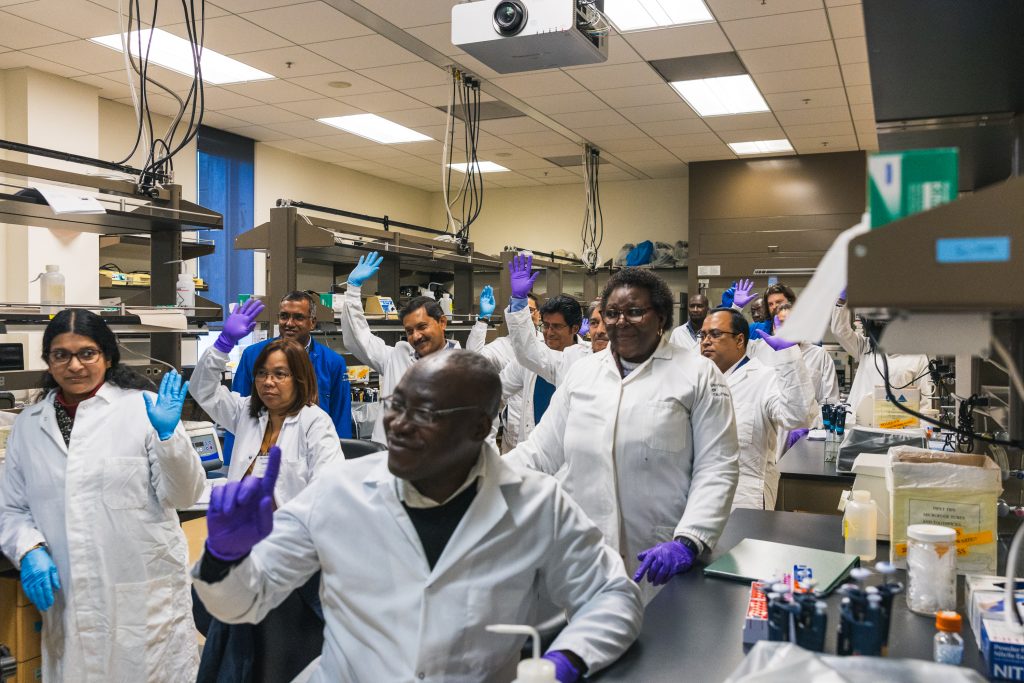 International Regulatory Capacity Building for Genome-edited Agriculture Workshop participants at the IGI in early 2024
International Regulatory Capacity Building for Genome-edited Agriculture Workshop participants at the IGI in early 2024
Making high-yield rice available to small farmers
Rice is a staple crop for more than half the world’s population, but most farmers in low- and middle-income countries don’t grow high-yield hybrid varieties because the seeds are too expensive.
IGI Investigator Venkatesan Sundaresan has created a solution: activating genes that allow rice to grow without the need for fertilization, creating affordable clonal strains of high-yield rice. This innovation will give small farmers around the world access to superior seed that had previously been out of reach and help feed a growing population.
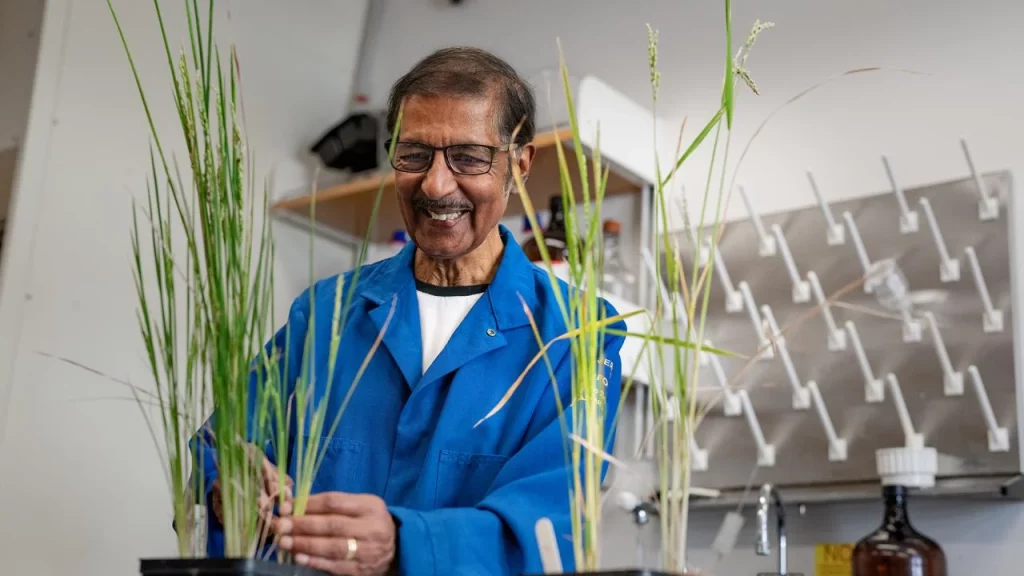 Venkatesan Sundaresan in his lab at UC Davis - Jael Mackendorf/UC Davis
Venkatesan Sundaresan in his lab at UC Davis - Jael Mackendorf/UC Davis
Launching our first clinical trial
In the very earliest days of the IGI, Jennifer Doudna went to Mark Walters at UCSF with an idea: to use the new CRISPR gene-editing technology to develop a cure for sickle cell disease, and one that can benefit everyone who needs it. Working in a consortium with UCSF Benioff Children’s Hospital and the UCLA Broad Stem Cell Research Center we developed a therapy that directly repairs the sickle cell mutation. We hope that by continually improving on our sickle cell treatment, we can make it and similar therapies safer and more affordable in the long run. The trial is currently enrolling patients and expected to dose the first patient this year!
Thanks for supporting us through the years. We have big plans for the next 10 years — stay tuned!
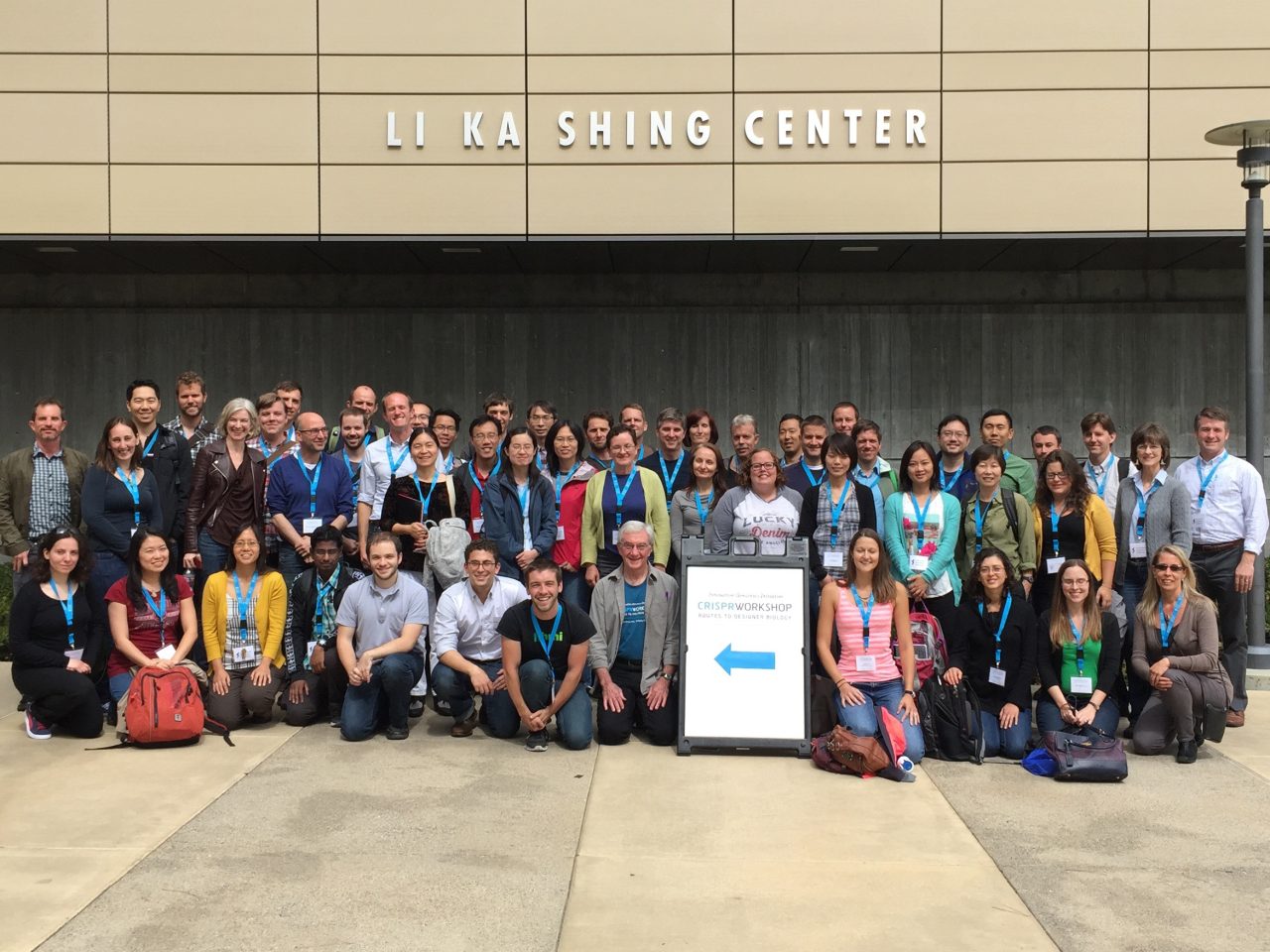
Group photo from the 2015 CRISPR Workshop at the IGI, before we moved into our current building at UC Berkeley. IGI founders Jennifer Doudna and Jonathan Weissman are in the middle row, third and fourth from the left.
See more about our work over the past year in the IGI 2024 Impact Report